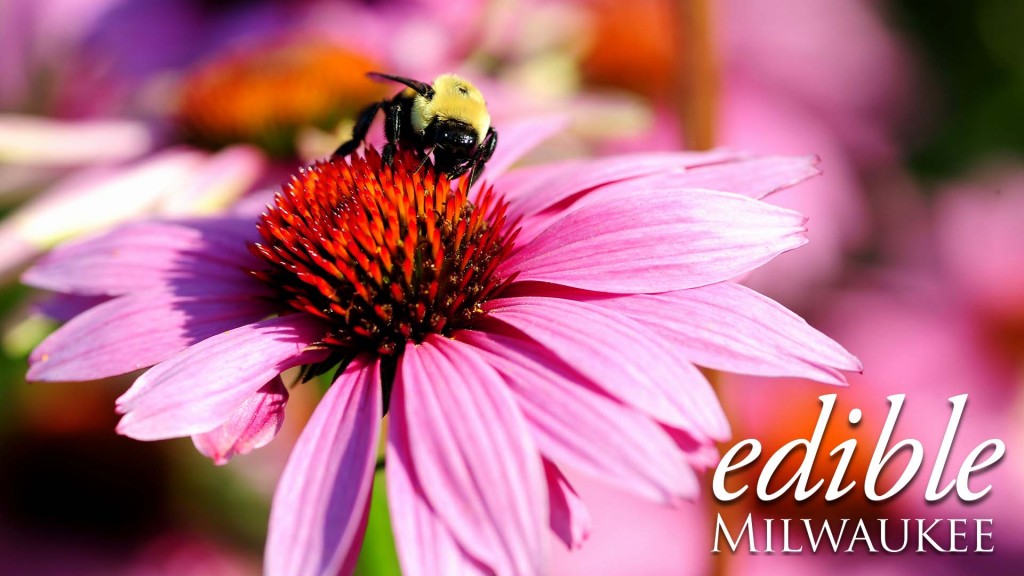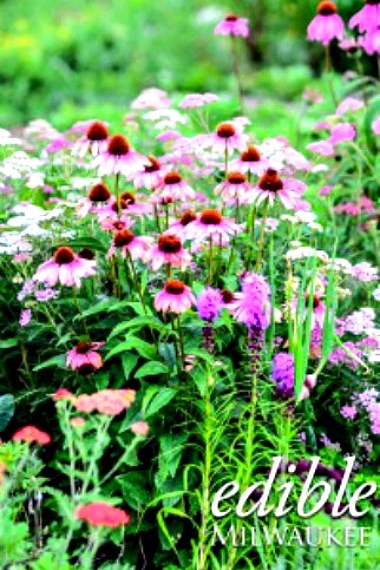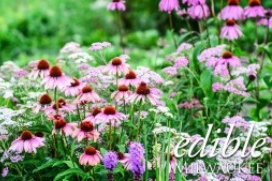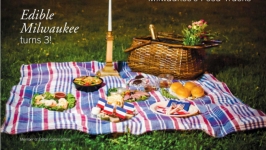The Littlest Heavy Lifter
How to Invite Native Pollinators to Grace Your Garden
Who loves to eat blueberries? What about tomatoes? Any watermelon fans around? Did you know that without the help of pollinators, we would not have any of these foods to enjoy?
Animal and insect pollinators are needed for the reproduction of approximately 90% of flowering plants and one third of food crops. This number only increases if you consider secondary products such as milk, beef or cheese coming from cows fed on plants, like alfalfa.
Spreading the Love
While commercial honeybees make up the majority of the insects pollinating our food-producing crops, native pollinators such butterflies, moths, wild bees, flies, hummingbirds and beetles also play a significant role.
The economic value of crops pollinated by these wild-living, native insects is more than $3 billion per year (non-native honeybees are responsible for the rest of the $20 billion), but the work of native pollinators has value beyond commercial agriculture and are responsible for numerous harvests of juicy tomatoes and hearty squash gathered in backyards and community gardens around Wisconsin.
While many of us have heard about the scary disappearance of bees, and colony collapse disorder and its pending impact on our food system, we often forget about the numerous native pollinator species also impacted by pesticide use, loss of habitat and other human actions.
In addition to not using pesticides in the garden, one of the easiest actions families and home gardeners can take to protect all pollinators (and our food supply!) is to plan and build a garden full of plants and spaces that attract native pollinators as well, as any visiting honeybees.
Come On In!
Families and home gardeners can take steps to encourage and invite native pollinators into their yard. This not only helps to support native pollinators and ensure we have fresh tomatoes to harvest, but it also creates a beautiful natural landscape to enjoy! Sit down as a family and talk about why it is important to protect and build a welcoming habitat for pollinators.
Research what foods are pollinated by insects. Create a list of your favorite foods that are dependent on them.
Have kids draw out a picture of their favorite meal normally. Then, ask them to imagine what their plates would look like in a world without pollinators.
Recognize the habitat and native pollinators that are already share your space.
For younger family members:
Send the kids out for some quiet observation time. Have them “play scientist” by quietly sitting and identifying the insects they spy out in the garden, along with what plant/flower the pollinator is visiting. Have younger kids draw what they see.
Compile a list of species spotted in the yard.
For adults and older youth:
Research the plants and habitat needed for the pollinators observed in your yard and/or the native insects that you would like to encourage. Just like how monkeys and gorillas like to eat different things and prefer different living spaces, bees and butterflies have unique preferences. The Xerces Society is a great place to start.
While there are countless insects and birds that regularly visit flowers and help pollinate plants (bees, butterflies, ants, beetles, moths, flies, hummingbirds and more!), we are going to focus on two different native pollinators groups that live here Southeastern Wisconsin.
Attract Aerial Assistants
There are nearly 4,000 species of native ground and twig-nesting bees in the U.S. Some form colonies and work together (bumblebees), while others live and work alone (carpenter, leaf-cutter and mason bees). Native bees pollinate many crops and can be encouraged to visit more if their water and nesting habitat needs are met.
Bees have tongues of varying lengths, determining which flowers they can obtain nectar from. Some need flowers with simple structures, while others, with longer tongues, such as the bumblebee, like complex flowers.
It’s just as important to provide bees with habitat as it is flowers and food to eat. Some bees burrow underground, while others prefer branches, sticks or burrowing into wood.
Butterflies prefer bright, day-blooming flowers with somewhere to land because they like to sit and rest while they eat. Their long tongues can reach deep into flowers while their big bodies collect pollen grains they brush against.
To attract butterflies, plant their preferred plants in full sun and a space protected by the wind. Butterflies love to bask in the sun on large stones or bare patches of earth, where they can also get needed minerals. Remember that butterfly larvae will eat the leaves of their host plants, but that slight cosmetic damage is a fair trade for showy adults that will pollinate your garden.
Create, Enhance or Restore Habitat
When designing a habitat to attract native pollinators, it’s important to consider bloom times, both throughout the day and the season. Different insects feed at different times of the day and a succession of blooms throughout the season will keep pollinators happy from April through October.
Annuals typically bloom longer than perennials, so having a mixture of the two will help ensure that something is always in bloom. Planting each plant species in masses or groups, instead of spread out around the garden, will aid pollinators in finding their food source.
For younger family members:
Sketch a garden full of flowers and to help attract pollinators
Build a Bee Box to attract native ground bees.
For adults and older youth:
Create a garden plan that includes plants and elements that will attract native pollinators. Below is a list of six plants, both native perennials herbs and annual varieties, that are excellent to plant together in the garden based on their varying bloom times and range of pollinators they attract.
Bonus: Both the bees and you will get to enjoy them!
Spring
Chives – (Allium schoenoprasum)
Thyme – (Thymus spp.)
Summer
Basil – either culinary or cutting varieties
Wild Bergamot – (Monarda fistulosa)
Dill (Anethum graveolens)
Fall
Hyssop(Hyssopus officinalis)








